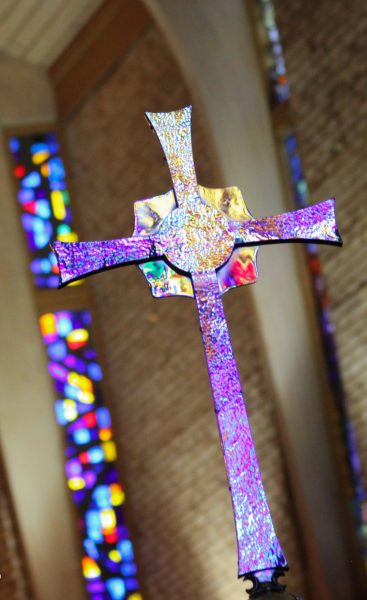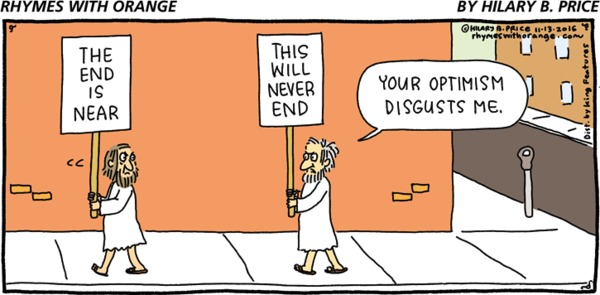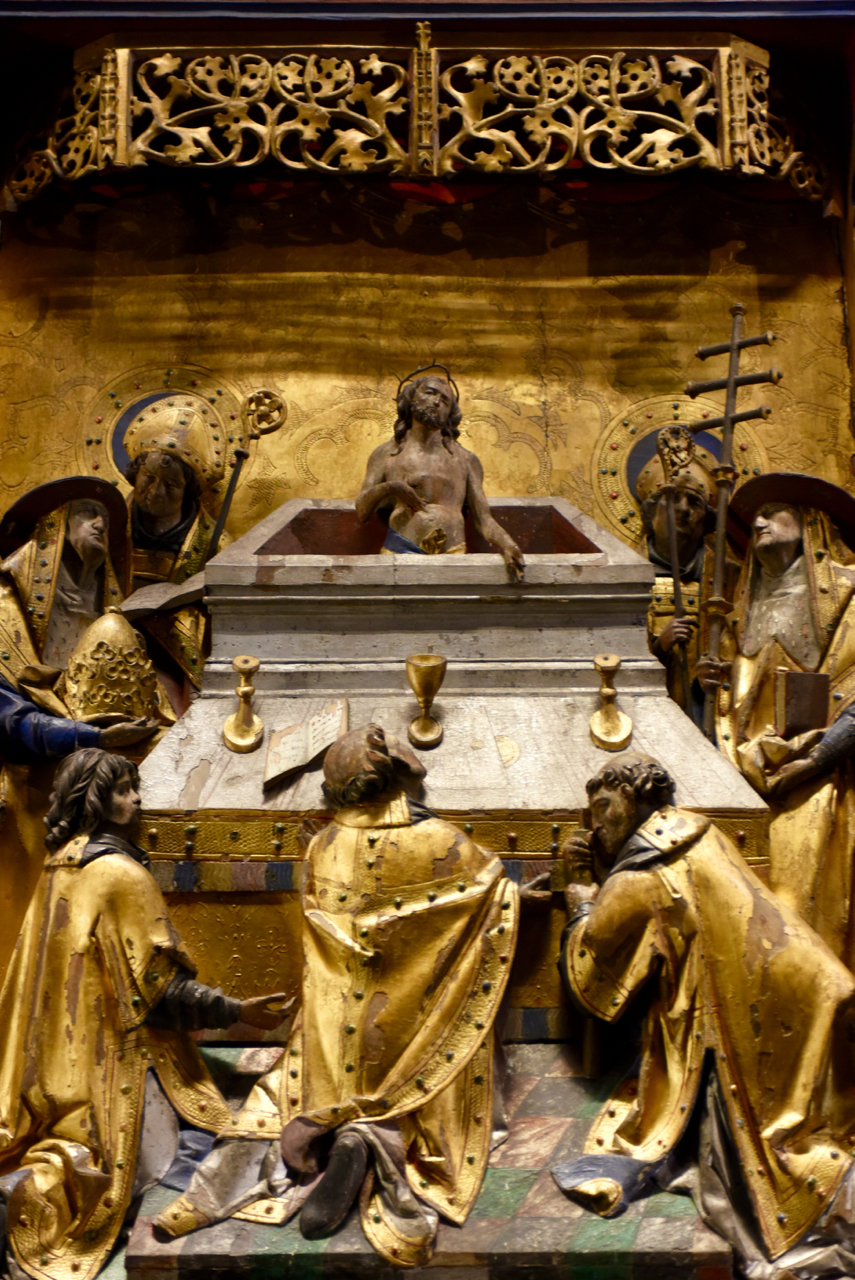The following was my Easter sermon delivered at St. B’s in 2017.
- Jeremiah 31:1-6
- Psalm 118:1-2, 14-24
- Colossians 3:1-4
- John 20:1-18
1Cor. 15:3 For I shared with you the most important truth that I had received: that Christ died for our sins in accordance with the scriptures, 4 and that he was buried, and that he was raised on the third day in accordance with the scriptures.
 Over the last twenty years I have attended a lot of matriculation and graduation ceremonies. In fact, in my years as a dean I personally have given more than 30 commencement addresses, listened to more than twice that number, and shook thousands of hands. Like a church service, the ceremony is scripted and even as the years pass certain things remain constant: some students will wear flip flops while some women will wear ridiculously high heels (I have had to catch more than one woman tripping down the stairs), others begin their celebrations well in advance of the event (and likely remember little of it), the creativity on the tops of their mortar boards is ever increasing, and the speeches are rarely noteworthy, not even mine. Like Christmas and Easter, the reason for the gathering is the same as it has been for centuries, the script is little changed, and yet it is always the first time for someone.
Over the last twenty years I have attended a lot of matriculation and graduation ceremonies. In fact, in my years as a dean I personally have given more than 30 commencement addresses, listened to more than twice that number, and shook thousands of hands. Like a church service, the ceremony is scripted and even as the years pass certain things remain constant: some students will wear flip flops while some women will wear ridiculously high heels (I have had to catch more than one woman tripping down the stairs), others begin their celebrations well in advance of the event (and likely remember little of it), the creativity on the tops of their mortar boards is ever increasing, and the speeches are rarely noteworthy, not even mine. Like Christmas and Easter, the reason for the gathering is the same as it has been for centuries, the script is little changed, and yet it is always the first time for someone.
This morning we read John’s account of that very first Easter morning. As I have prayed in preparation for this sermon I wondered what I could say that had not been said before, what new message God might have for us this Easter. There is no new message. The truth has not changed: Christ has died, Christ is risen, Christ will come again! Yet because the truth and the message remains the same it is vital that we consider it again because this day, the day on which Jesus rose from the dead, everything else changed.
The Gospel of John provides us with some interesting details that might also help us to understand the Easter story anew and perhaps even see ourselves within it. John tells us that Mary Magdalene is the first to arrive at the tomb, before sunrise, and discovers that the stone had been removed from the tomb. She does not look into the tomb, but instead runs to tell “Simon Peter and the other disciple” (presumably John). They then dash off to see for themselves. The Beloved Disciple arrives first, but like Mary, he does not enter, he simply bends down, looks in and sees the linens that had wrapped the body of Jesus. Then Peter arrives and rushes directly into the tomb, seeing not just the linens, but rolled up neatly by itself, the cloth that had covered Jesus’ head. At this point the other disciple entered and, John tells us, “he saw and believed.” Then John provides us with perhaps the most curious of details, “Then the disciples returned to their homes.”
Mary remains at the tomb. Then, as she weeps, she bends over and sees the two angels who ask her why she is weeping. Finally, Jesus himself appears to her. She does not recognize him at first, but when he simply speaks her name, “Mary.” She let’s out a cry of joy and relief. Then at Jesus’ command she goes and tells all the disciples that she seen the Lord.
So let us consider the actions and reactions of these three followers of Jesus. Starting with the smaller parts, as it were, of Peter and the Beloved Disciple. Peter shows typical Petrine impetuous behavior even if he is older and less fit that the other disciple. Once at the tomb he runs directly in to see what it will reveal. John tells us that “he saw the linen wrappings lying there, and the cloth that had been on Jesus’ head, not lying with the linen wrappings but rolled up in a place by itself.” But that is all we are told. We do not know what Peter was thinking or what conclusions he had arrived at based upon his observations. He says nothing. Peter does not stay long.
The Beloved Disciple arrives at the tomb first, but does not enter. From the entrance all he can see is some linen. After Peter looked into the tomb, the other disciple enters as well. Some scholars suggest that this disciple is in fact John, the author of the Gospel. If so it would explain how it is that John is able tell us that upon seeing the grave clothes this disciple “believed.” Then he too does not stay long since we are told, “Then the disciples returned to their homes.”
Here we have these two men who were very close to Jesus during his life and remained close to him even unto his death. What do we make of their actions? They were eager to see for themselves what had happened to Jesus’ body, to confirm what Mary had said, that it was no longer there. But what did Peter think when he saw that empty tomb? Perhaps, like Mary, he assumed that his body had been taken. After all, the Gospel of Matthew tells us that this was the rumor started to suppress the news of the resurrection.
The Beloved Disciple “believed,” but the Gospel is a bit ambiguous as to what he believed in that moment since it says, “he saw and believed; for as yet they did not understand the scripture, that [Jesus] must rise from the dead.” The grave clothes are surely the key. If Jesus’ body was stolen they would have left him wrapped and anointed. The Beloved Disciple believed…that something miraculous had happened.
And yet they left. Had they remained what would they have seen? How much more deeply and clearly would they have believed?
Mary is devoted to Jesus. She comes early in the morning, before the sun has risen, to be near her Lord even in his death. When she sees the tomb opened she fears the worst and brings the disciples. But after they have come and gone, she remains. She continues to be at the tomb weeping and waiting. Her patience and devotion is rewarded.
The angels did not appear to the others, they waited until Mary was alone and then they ask, “Why are you weeping?” She weeps because the world took her master from her. The authorities had conspired to kill her dear friend. She cries in anguish because now she fears they have desecrated his body as well. She simply wants to know where he is so she can continue to love him and care for him, even in his death. She is devout, loyal, and loving. The angels offer her no answer.
Then Jesus appears to Mary and Mary alone and asks her again, “Why are you weeping?” Jesus then adds the pointed question, “Whom are you looking for?” He does not ask “what” because he knows that she is seeking a person, not a corpse or a thing. “Whom are you looking for?” When he speaks her name, Mary recognizes her Master.
While we are told simply that the disciples went home, when Mary Magdalene leaves the tomb she goes with a mission from Jesus, to go to his followers and tell them that she has seen Jesus and he has said, “I am ascending to my Father and your Father, to my God and your God.”
So where do you find yourself in this story? I see some of myself at different times in my life with each follower of Jesus. There are times when I am so eager I grab at the most immediate answer, barely stopping to pray or weep. I get in and I get out. This doesn’t mean that we aren’t committed to Jesus, but rather that we aren’t always willing to take the time to reflect and consider what we have just seen and experienced.
For example, the disciples did not understand the scripture concerning Jesus’ resurrection because they had yet taken the time to study and reflect on all that all that Jesus had taught them. This is surely excusable since they were still grieving the loss of their Master. But how often do we dip into the story of Jesus simply now and again, see a bit that excites us, leads us to believe a bit, but then leave again before Jesus is fully revealed in our lives? Are we constantly in a rush to find an answer to the questions we have in mind and miss the answers that Jesus has to offer?
Then there are other times I weep. I weep and often I am not even weeping about the right things. Mary Magdalene is crying bitterly because she believes that Jesus’ body has been taken, when in fact he has risen and is standing right beside her.
But Mary is faithful and patient. She remains and investigates, seeks to find out what has truly happened to her Master so that she might serve him even after he is gone. This is a model that I aspire to and often do not achieve. Mary is passionate enough to weep and yet determined enough to be ready to carry Jesus’ body away herself to ensure he is treated with respect. This is the devotion our Lord deserves.
Mary Magdalene teaches me this morning the importance of devotion and patience, even while weeping. Our faith grows deeper the more we are committed and engaged to seeking out Jesus.
3:1 So if you have been raised with Christ, seek the things that are above, where Christ is, seated at the right hand of God. 2 Set your minds on things that are above, not on things that are on earth. (Col. 3:1-2)
Amen. ✠





